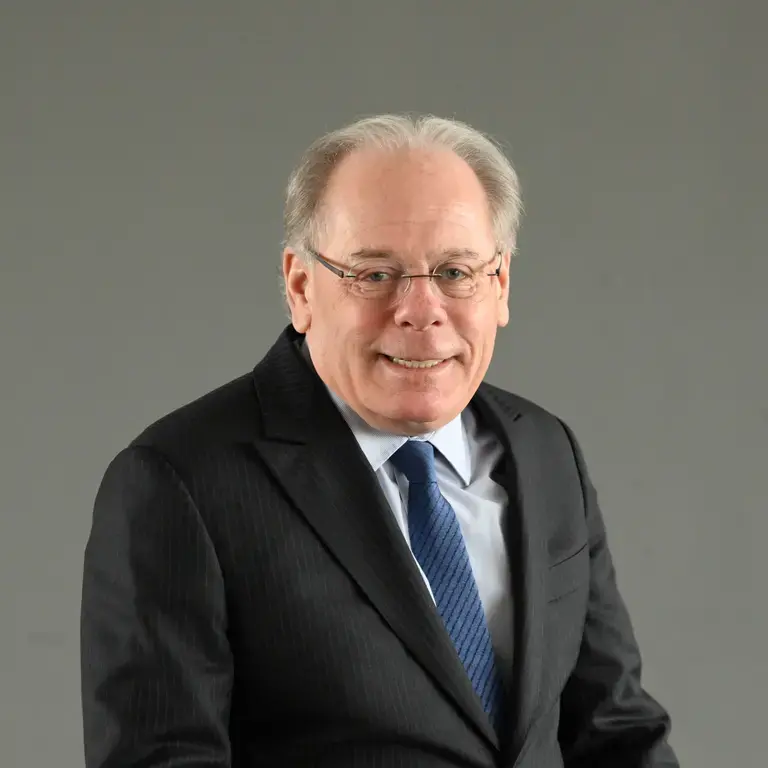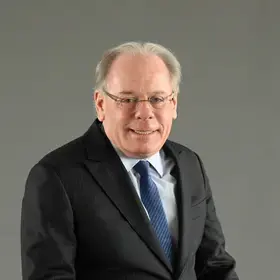By Steven Cohen, Ph.D., Director of the M.S. in Sustainability Management program, School of Professional Studies
Not content with eliminating federal climate policy, the Trump Administration is also trying to eliminate state and local environmental programs. One part of their strategy is to eliminate federal funding of related and unrelated state programs. Another is simply to assert federal authority via executive orders and agency-specific policy edicts. On April 5th, the President issued an Executive Order asserting that:
“Many States have enacted, or are in the process of enacting, burdensome and ideologically motivated “climate change” or energy policies that threaten American energy dominance and our economic and national security. The Attorney General, in consultation with the heads of appropriate executive departments and agencies, shall identify all State and local laws, regulations, causes of action, policies, and practices (collectively, State laws) burdening the identification, development, siting, production, or use of domestic energy resources that are or may be unconstitutional, preempted by Federal law, or otherwise unenforceable. The Attorney General shall prioritize the identification of any such State laws purporting to address “climate change” or involving “environmental, social, and governance” initiatives, “environmental justice,” carbon or “greenhouse gas” emissions, and funds to collect carbon penalties or carbon taxes… The Attorney General shall expeditiously take all appropriate action to stop the enforcement of State laws and continuation of civil actions…that the Attorney General determines to be illegal.”
It is unlikely that the federal government has the power to stop state laws, unless they directly impact interstate commerce. It is interesting that the administration finds the state laws to be ideologically motivated, and presumably their opposition to these laws somehow free of ideology. The quotation marks around words like climate change and greenhouse gas stem from the administration’s denial of the facts of climate change. In addition to the attack on state climate policy, there is also an effort to strip California of its half-century-old ability to enforce clean air standards that are more stringent than federal standards.
Federalism is a central pillar of America’s system of governance, which enables a degree of local control of government and prevents the consolidation of power in the national government. Moreover, a federal government that is committing institutional suicide by stripping itself of administrative capacity and firing many thousands of skilled staff is unlikely to retain the bandwidth needed to control scores of state governments and thousands of local governments. It is hard to believe that this federal government will be able to match its words with deeds.
Here in New York and New Jersey, decarbonization efforts are not only focused on climate change but on modernizing our century-old energy system to reduce long-run costs and increase reliability. Shortly after the new administration took office, the online magazine City and State held its annual infrastructure conference, and Phenix Kim reported that:
“While President Donald Trump’s latest executive orders have signaled an ominous end to green infrastructure and diversity, equity and Inclusion efforts – such rhetoric will do little in dismantling major sustainable infrastructure projects in the New York, New Jersey region, speakers at City and State’s 2025 Most Significant Infrastructure Projects Summit said Thursday. Keynote speaker Rick Cotton, executive director of the Port Authority of New York and New Jersey assured stakeholders that the authority remains steadfast to meet New York State’s net-zero emissions goal by 2050. The $10 billion rebuild of the Manhattan Midtown bus terminal, equipped with expanded storage and staging facilities for new fleets of zero-emission buses, alone will be one the region’s most ambitious carbon-cutting measures, with construction set to begin later this year with help from a $1.9 billion loan from the U.S. Department of Transportation.”
Of course, the loan was announced in the last week of the Biden Administration, and it wouldn’t be too surprising if it were canceled. Just as the federal government has attempted to halt congestion pricing south of 60th Street in Manhattan and has threatened to withhold Department of Transportation funding to New York if the fee is not eliminated. This is being adjudicated in the courts, and we do not know the ultimate outcome. Still, many people working at the state and local level are confident that their decarbonization programs will continue. As Kim reported in City and State, at the infrastructure conference:
“… panelists reflected on the potential impact of the Trump presidency on sustainable infrastructure projects, most experts were confident that the state will remain committed to net zero emissions by 2050. “80% of energy decisions get made at the state level. We can get a lot done. There are a lot of things that have bipartisan support, like the Utility Thermal Energy Network and Jobs Act, which passed unanimously in the Senate and nearly unanimously in the State Assembly. Especially around infrastructure, there is a lot of really great bipartisan support,” said Lisa Dix, the New York director of the Building Decarbonization Coalition.”
While the Trump administration has focused on consolidating power and disrupting traditional arrangements, there are limits to the “chainsaw” approach to managing governmental functions. Their most successful tactic thus far has been cutting off the disbursement of funds already committed to a grantee or contractor. To the extent that states are dependent on federal resources, it is difficult for them to dismiss federal demands. Still, states have sovereignty, and they also have the ability to generate revenue and borrow money. They also have representatives in Congress, and if these legislators start to do their jobs, they will reassert their influence in federal spending and protect their constituents from budget cuts. Federal agencies do not have the freedom of action enjoyed by states, and while climate programs are being eliminated in Washington, they are likely to persist elsewhere.
One of the strengths of American federalism is that states often can act as test beds for new and innovative policies that, if successful, are adopted by other states and even the federal government. In the United States, most governmental efforts to protect the environment are undertaken by state and local governments. State and local governments devote far more funding and staff to environmental protection than those allocated by the federal government. This includes sewage treatment, water filtration and supply, zoning laws, and the regulation of electric utilities. National standards for air and water pollution were first established in the 1970s, and while the federal government issues standards, state and local governments largely implement those policies. With decades of dysfunctional policy formulation in Washington, states have taken the lead in climate policy. As Lisa Friedman has reported in the New York Times:
“During his first term, when Mr. Trump attempted to roll back more than 100 environmental rules and regulations, state and local government efforts to cut greenhouse gases acted as a bulwark. Today there are hundreds of state and local laws addressing climate change across the country. Arizona, North Carolina, Pennsylvania and Illinois are among 25 states that have renewable and clean energy standards for electricity, while 20 states have set goals to reduce greenhouse gas emissions across their economies, according to the U.S. Climate Alliance, a group of 24 governors. Colorado, Connecticut, New Jersey and Nevada are among 15 states with their own tailpipe emissions limits, and many of them have also formally adopted a plan that originated in California to ban the sale of new gas-powered cars by 2035. Together, they make up nearly half of the U.S. auto market. New Mexico has led the way on reducing methane from oil and gas wells and landfills, and it and 13 other states now have laws or regulations to curb that potent greenhouse gas.”
The attack on state environmental policy is one element of many that the Trump administration is pursuing to consolidate power in the presidency. Congress is sitting by idly while he strips them of their power of the purse and is allowing the administration to act under emergency wartime powers to fight an imaginary, self-defined war. But the judicial branch is pushing back, and so too are the states. Even before Trump, the presidency had become far more powerful today than ever. But government at all levels has become more powerful and is more involved in our daily life than it was at the founding of this country. Government’s role has expanded as our technology, economy, and society have grown more complex and interdependent. This is why checks and balances and competing centers of political and economic power are critical in protecting the freedom that is at the heart of America’s culture and way of life. That freedom results in the creative energy that fuels the American economy. The Trump administration’s attack on states, universities, courts, law firms, and Congress will ultimately fail, but the noise and stress caused by this period will harm America and test our resiliency.
Views and opinions expressed here are those of the authors, and do not necessarily reflect the official position of Columbia School of Professional Studies or Columbia University.
About the Program
The Columbia University M.S. in Sustainability Management program offered by the School of Professional Studies in partnership with the Climate School provides students cutting-edge policy and management tools they can use to help public and private organizations and governments address environmental impacts and risks, pollution control, and remediation to achieve sustainability. The program is customized for working professionals and is offered as both a full- and part-time course of study.



